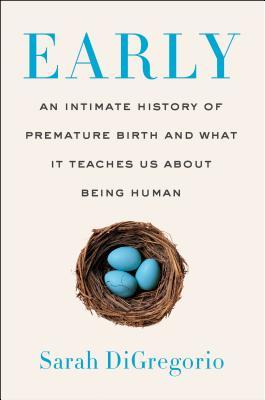
Early
An Intimate History of Premature Birth and What It Teaches Us About Being Human
یک تاریخچه نهایی از تولد پیش از بلوغ و آنچه که ما را در مورد انسان بودن تحریک میکند
کتاب های مرتبط
- اطلاعات
- نقد و بررسی
- دیدگاه کاربران
نقد و بررسی

November 15, 2019
Impelled by the premature birth of her daughter, a journalist explores how modern medicine has changed regarding the care of babies born too early and of the ethical issues that can be involved. In the prologue, DiGregorio, a Brooklyn-based freelance journalist (New York Times, Wall Street Journal, Food & Wine, etc.), describes the experience of having an extremely-low-weight child in the hospital's neonatal intensive care unit. Her focus then broadens from memoir to journalistic report. In the first chapter, she reveals how common preterm births are: 15 million annually worldwide, with the United States having "the worst rate in the industrialized world." Throughout, DiGregorio provides illuminating chronicles of her interviews with neonatal care professionals. She examines the development of incubators and then looks into the future, when we may see the use of a biobag, a sort of artificial womb that has been used successfully with premature lambs. The author also explores such issues as retinopathy and breathing problems and the techniques that doctors have adopted to handle them. In this section, she shows how the death of Jaqueline Kennedy's premature son, Patrick, led to greater funding for research into respiratory care. DiGregorio makes clear that the problems facing preterm babies can be enormous, that consequences may not be apparent for years, and that the appropriateness of treatment can be debated, and she argues for deep consideration of the question of whether to use or to withhold life support for extremely premature babies. The author then turns to the causes of prematurity. One among the many factors is stress, leading her to suggest that the higher rate of premature births among African American women is a result of living in a racist environment; a separate chapter on prematurity in Mississippi illuminates this issue. Finally, DiGregorio gives voice to grown preemies and their parents, selecting a few of them to share their stories with readers. Clear reporting that wisely urges careful decision-making by clinicians and parents alike.
COPYRIGHT(2019) Kirkus Reviews, ALL RIGHTS RESERVED.

December 1, 2019
In the United States today, only 1.6 percent of babies are born before 32 weeks and fewer than one percent are born weighing less than two pounds. DiGregorio, a journalist, had been alerted by her obstetrician that her baby might be born prematurely. To prepare, DiGregorio learned all she could about premature births before Mira's birth, and continued to research the subject afterwards. The author explores the plight of premature babies in earlier years (Mira, now a lively and relatively healthy child, was born by emergency C-section almost 12 weeks early and weighing only one and a half pounds; she likely would not have survived), discusses medical advances in prenatal as well as neonatal care, and considers bioethical issues regarding extremely high-risk babies. DiGregorio also points out the importance of knowing hospital's policies regarding end-of-life care. VERDICT A well-written, carefully researched book that should be of vital interest to potential parents and their friends and families.--Marcia G. Welsh, Dartmouth Coll. Lib., Hanover, NH
Copyright 2019 Library Journal, LLC Used with permission.

December 2, 2019
After giving birth at 28 weeks, food writer DiGregorio (Adventures in Slow Cooking) wanted to better understand her experience; the result is this compassionate exploration of preterm birth. Along with personal recollections of “the impossible, science-fiction smallness” of her one-pound, 13-ounce baby, DiGregorio describes the technologies, such as incubators and ventilators, that have improved survival rates for premature infants, and the improvements in care, such as a greater sensitivity to brain development, that have improved their quality of life. She also poses urgent, and as yet unresolved, questions, such as why African-American women have the highest rates of preterm birth, or at what point a preterm baby can still be considered viable—the latter question confronting parents with the agonizing choice between “active and comfort care.” Sensitively approaching the myriad practical and ethical challenges involved in caring for such fragile babies, DiGregorio gives vivid, individualized portraits of struggling parents, premature infants who developed into thriving children, and the specialists dedicated to helping them. Reassuringly emphasizing that most preterm babies develop into happy, fulfilled children, DiGregorio delivers a candid yet gentle work with appeal for prospective parents and anyone interested in “what premature birth teach us about being human.”

























دیدگاه کاربران